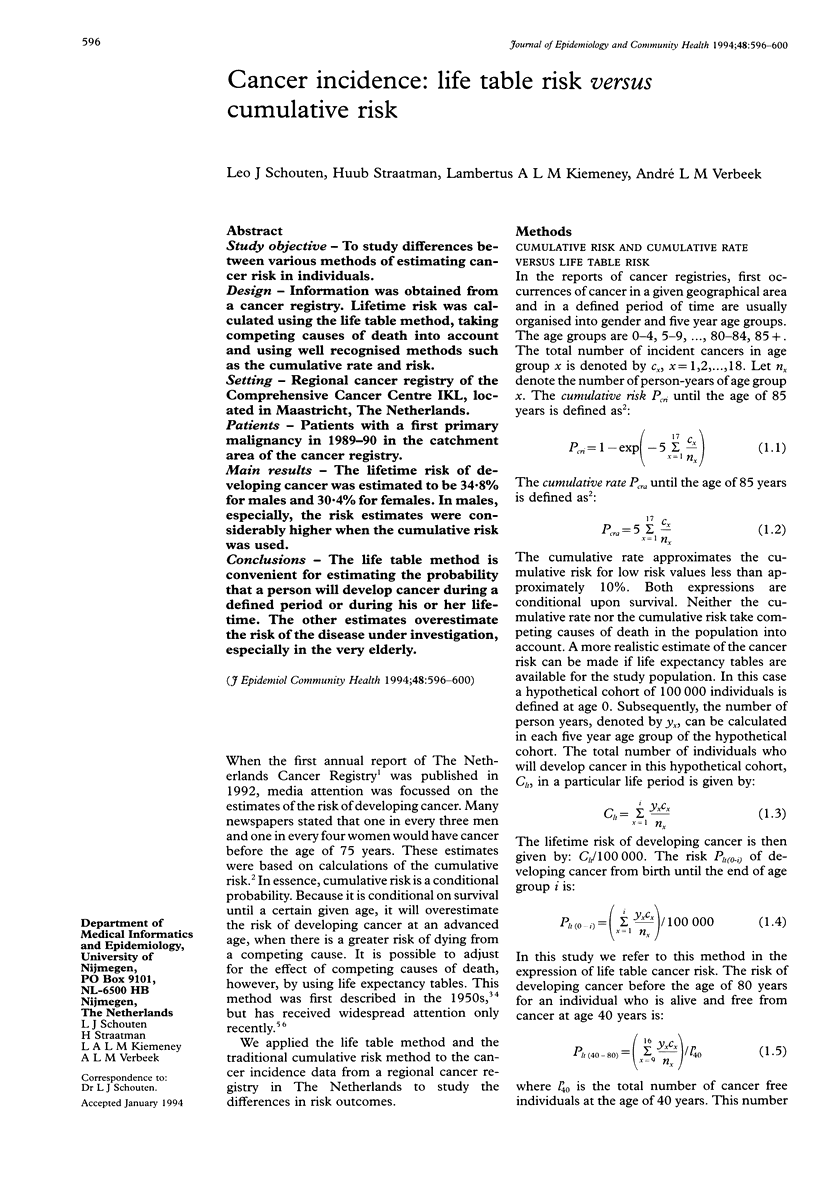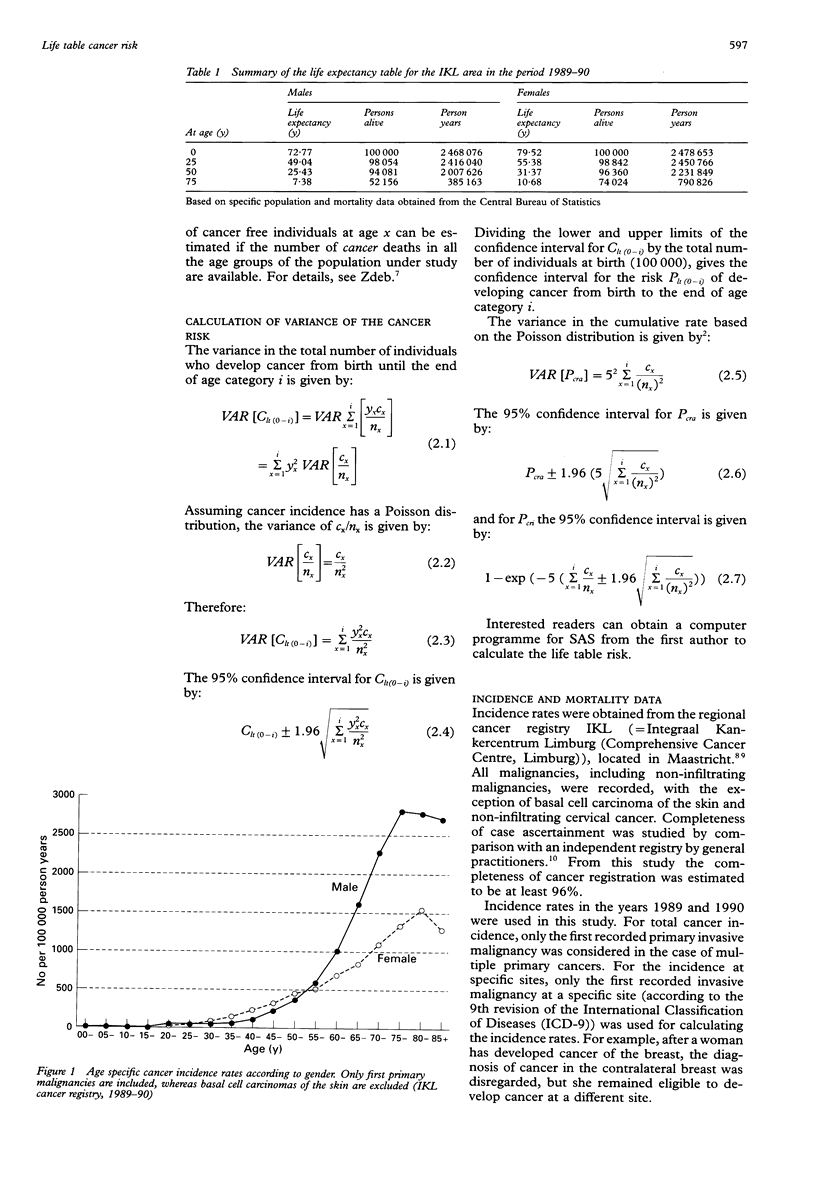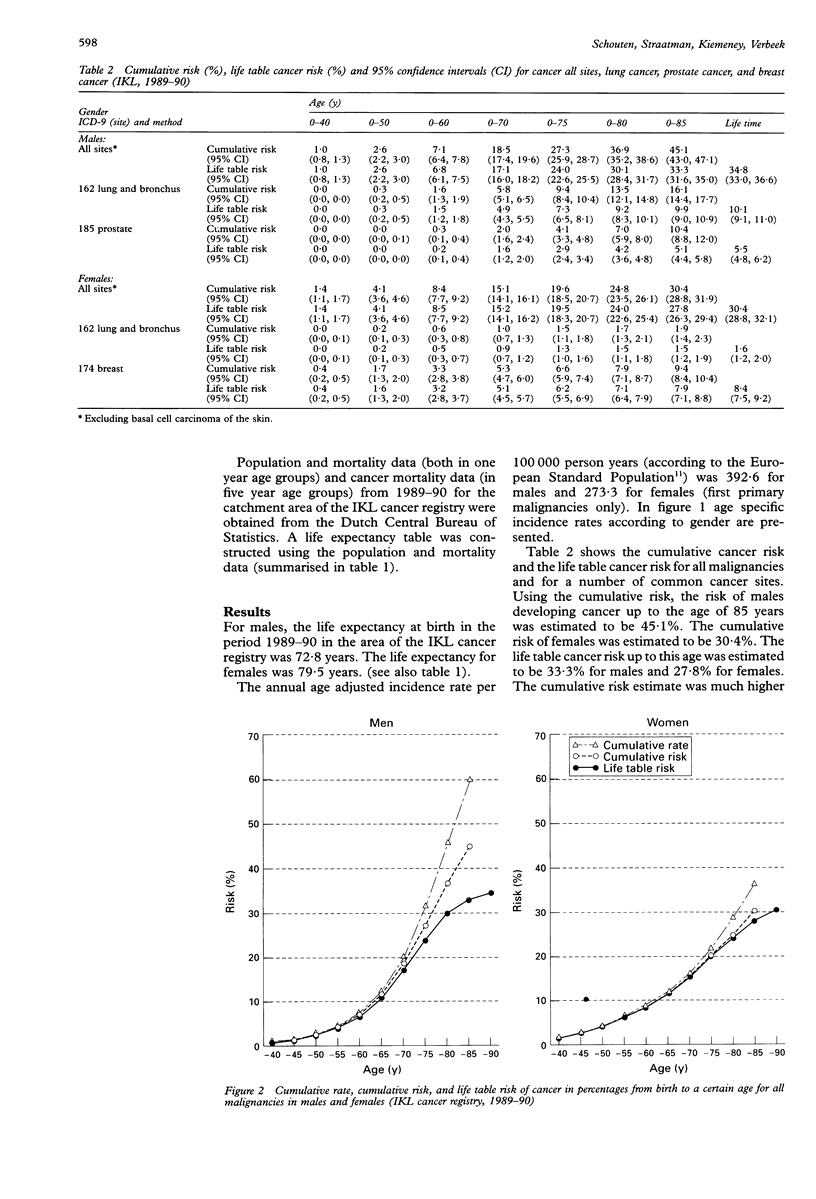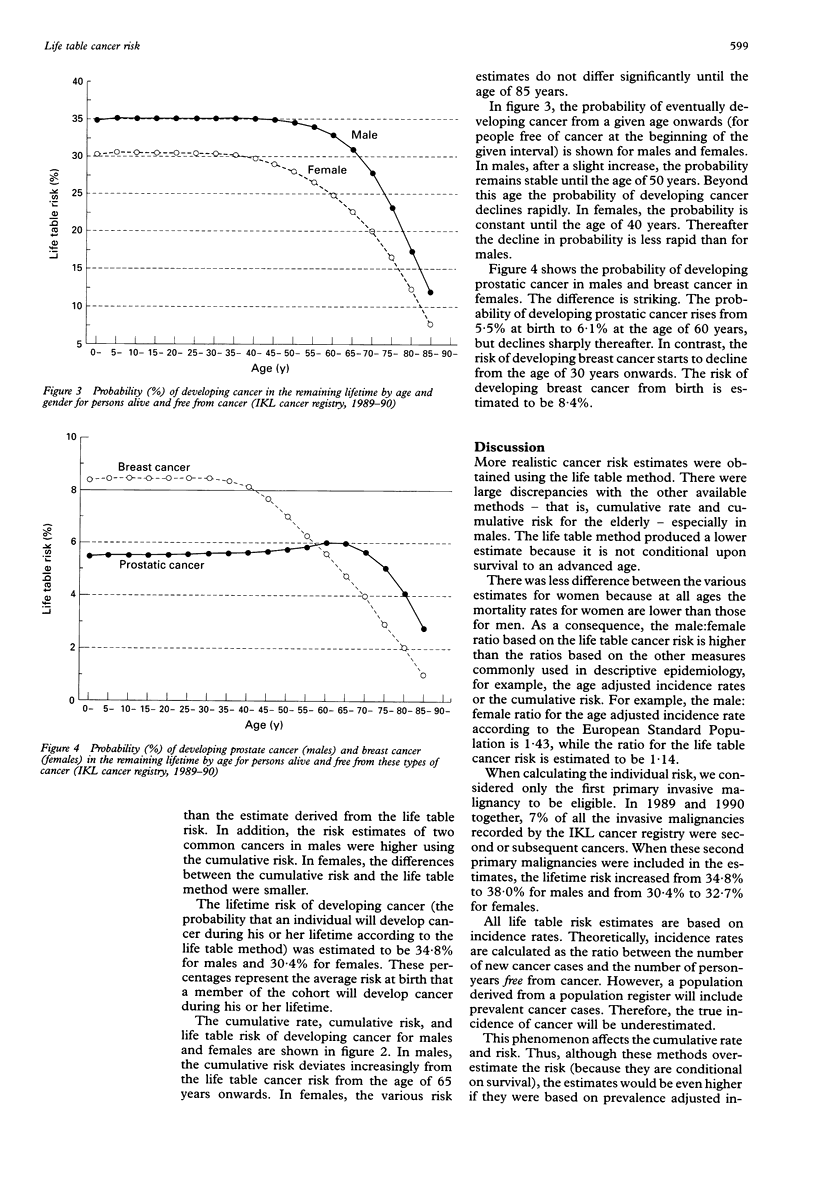Abstract
STUDY OBJECTIVE--To study differences between various methods of estimating cancer risk in individuals. DESIGN--Information was obtained from a cancer registry. Lifetime risk was calculated using the life table method, taking competing causes of death into account and using well recognised methods such as the cumulative rate and risk. SETTING--Regional cancer registry of the Comprehensive Cancer Centre IKL, located in Maastricht, The Netherlands. PATIENTS--Patients with a first primary malignancy in 1989-90 in the catchment area of the cancer registry. MAIN RESULTS--The lifetime risk of developing cancer was estimated to be 34.8% for males and 30.4% for females. In males, especially, the risk estimates were considerably higher when the cumulative risk was used. CONCLUSIONS--The life table method is convenient for estimating the probability that a person will develop cancer during a defined period or during his or her lifetime. The other estimates overestimate the risk of the disease under investigation, especially in the very elderly.
Full text
PDF






